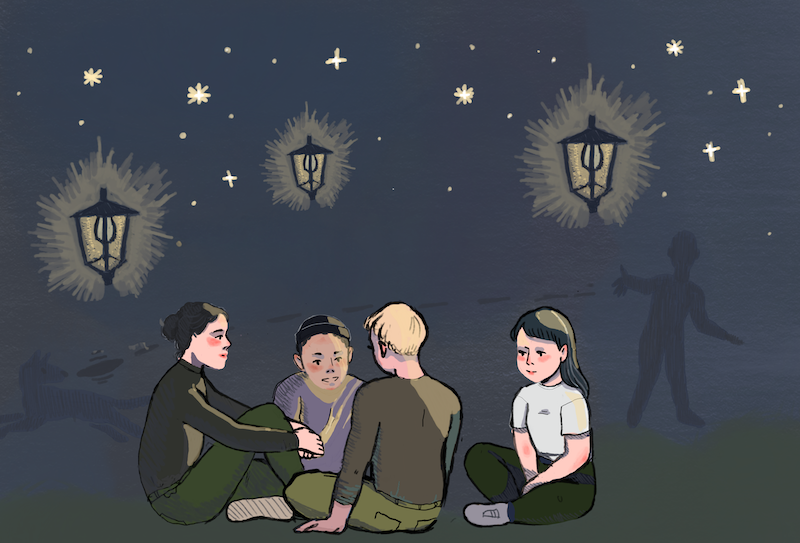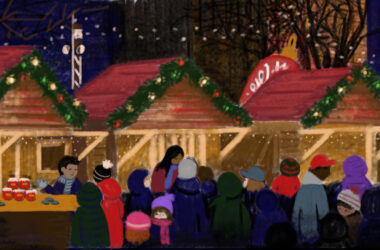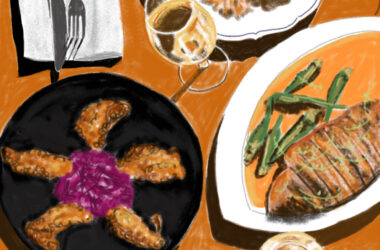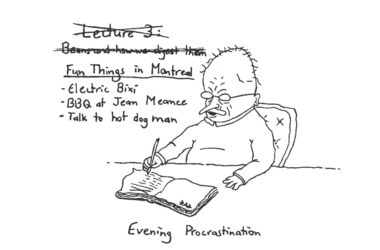By the time 8:00 p.m. rolls around on a nice night, Jeanne-Mance Park is crowded with people. As the sun sets, people form small circles, huddle around picnic tables, and can sometimes be spotted dancing on the grass. In an effort to better understand the diversity of these park gatherings, The McGill Tribune talked to a range of park-goers one evening, many of whom were McGill students.
Isabel Heard, U3 Arts, joined friends for a picnic to break their fast following Yom Kippur. Stepping aside from her circle of friends, Heard shared her thoughts on Jeanne-Mance park gatherings.
“This is a very McGill space for me,” Heard said. “You can tell that there’s a lot of McGill students that hang out here [….] I usually spend time talking to everyone and […] I like it because it’s kind of chaotic.”
Though some associate the park with McGill student life, others like Elyssa Khoury, a first-year master’s student studying political science, have memories that date further back.
“I grew up in Montreal, so […] I have a lot of memories here,” Khoury said. “I planned a surprise party for my boyfriend [here].”
Khoury has been coming back to the park more often than she did before the pandemic. That night, she and other master’s students chatted over a few beers.
“I think it’s different at a bar,” Khoury explained. “In a restaurant, you can’t really stay six hours, and then that shortens your social activity because you have to [ask] ‘what are we doing now? Is the night over?’”
The night certainly wasn’t over for another group who came to Jeanne-Mance to play volleyball but decided to hang out on the bleachers when they realized the nets were no longer up.
Vivienne Orrell, a student at Dawson college, and her sister Ingrid, were among the group. As amateur volleyball players, they planned to play with their friends later that night, appreciating the absence of the more skilled volleyball teams that populate the court during the day.
Gazing up at the Mount-Royal cross, visible from the park’s fields, the sisters looked back on a night they spent out with friends roaming around the mountain, no specific destination in sight.
“One time we spent all night on the mountain walking,” Orrell said. “We were saying it was going to be an all-nighter, but then everyone went home around five.”
Spanning 14 hectares of greenery, Orrell feels Jeanne-Mance Park is an essential part of the city.
“At night, […] people are drinking,” Orrell said. “I suppose the sentiment of downtown is present in the park tonight.”
While some park meet-ups are planned casually between friends, others are run by student organizations.
Sophia Howard, U2 Science, was at an event with AM McGill, also celebrating Yom Kippur.
“It kind of reminds me of Washington Square Park,” Howard said of the park’s liveliness, reminiscent of a hometown spot for her.
Others, like Ismael Sefiane, U1 Management, and his friend Simo Bouayad, U2 Management, came to the park on a whim. The park’s central location, bordering on neighbourhoods densely populated by students, makes it a convenient meeting place.
“Some friends [from management] called me, so here we are,” Sefiane said. “They just told me five minutes ago.”
In comparison to typical house parties, Sefiane noted the different atmosphere meet-ups in the park offer.
“It’s more chill [in the park],” Sefiane said. “The house is smaller and […] it’s going to be more crazy.”
As we spoke, a growing crowd gathering behind us began to dance, chanting “hotel, motel, Desautels.”
With dancing and singing currently prohibited in Montreal bars and clubs, Jeanne-Mance has quickly become the venue for an adapted version of traditional student nightlife activities over the pandemic. Where there is an open space, you will almost undoubtedly find students taking the opportunity to party there.







